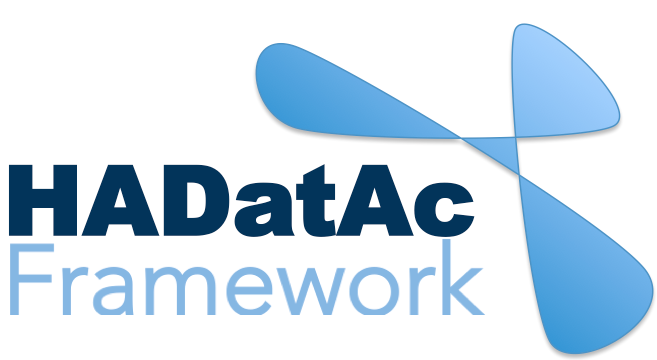-
Notifications
You must be signed in to change notification settings - Fork 24
7.1. Access Network
Every HADatAc has one access network composed of
- access levels and
- users

HADatAc’s access networks are initially composed of one default access level called public. Every user belongs to one access level, and is an access level on its own. For instance, if the access network is brand new, it only has the access level public. Therefore, if a new user Carol is added, it is added under public. The figure above shows a more complete example of an access network where we see the node representing Carol pointing to the pulic node. This means that any data added by Carol to HADatAc will initially belong to Carol who will be the only user capable of accessing that data. If Carol needs to share the data, Carol can relax the restriction on the data by moving the access to the data to public.
On the same way that users are added to an access network, new access level can also be added. Public is the less restricted level of access in the access network and the further an access level with respect to public the more restricted it the access level. In the figure above we see that three access levels have been added to our example network: Project, Group A, and Group B. We also see that both Group A and Group B are connected to Project, meaning that Project is the less restricted of these access nodes.
In terms of building an access network, we need to observe the following:
- Every access level must be connected to another access level (and that public is a default access level available in any access network. This rule also implies that an access level cannot be connected to a user.
- Every user needs must be connected to an access level

Every user has an access vector. For instance, in the figure above, Helen has the following access vector: <Helen,Group A, Project, public>. That means that any data owned by Helen is assigned to be accessed only by Helen (unless this rule is overwritten by the permission credentials in an OAS file being used to load Helen's data). From there, Helen can go to the data acquisition specification of her data and grant access to any of the levels in her access vector, including public.
How to verify the access permission of my data
How to change my data's access permission
Copyright (c) 2019, HADatAc.org

-
Installation
1.1. Installing for Linux (Production)
1.2. Installing for Linux (Development)
1.3. Installing for MacOS (Development)
1.4. Deploying with Docker (Production)
1.5. Deploying with Docker (Development)
1.6. Installing for Vagrant under Windows
1.7. Upgrading
1.8. Starting HADatAc
1.9. Stopping HADatAc -
Setting Up
2.1. Software Configuration
2.2. Knowledge Graph Bootstrap
2.2.1. Knowledge Graph
2.2.2. Bootstrap without Labkey
2.2.3. Bootstrap with Labkey
2.3. Config Verification -
Using HADatAc
3.1. Initial Page
3.1.1. Home Button
3.1.2. Sandbox Mode Button
3.2. File Ingestion
3.2.1. Ingesting Study Content
3.2.2. Manual Submission of Files
3.2.3. Automatic Submission of Files
3.2.4. Data File Operations
3.3. Manage Working Files 3.3.1. [Create Empty Semantic File from Template]
3.3.2. SDD Editor
3.3.3. DD Editor
3.4. Manage Metadata
3.4.1. Manage Instrument Infrastructure
3.4.2. Manage Deployments 3.4.3. Manage Studies
3.4.4. [Manage Object Collections]
3.4.5. Manage Streams
3.4.6. Manage Semantic Data Dictionaries
3.4.7. Manage Indicators
3.5. Data Search
3.5.1. Data Faceted Search
3.5.2. Data Spatial Search
3.6. Metadata Browser and Search
3.7. Knowledge Graph Browser
3.8. API
3.9. Data Download -
Software Architecture
4.1. Software Components
4.2. The Human-Aware Science Ontology (HAScO) -
Metadata Files
5.1. Deployment Specification (DPL)
5.2. Study Specification (STD)
5.3. Semantic Study Design (SSD)
5.4. Semantic Data Dictionary (SDD)
5.5. Stream Specification (STR) -
Content Evolution
6.1. Namespace List Update
6.2. Ontology Update
6.3. [DPL Update]
6.4. [SSD Update]
6.5. SDD Update -
Data Governance
7.1. Access Network
7.2. User Status, Categories and Access Permissions
7.3. Data and Metadata Privacy - HADatAc-Supported Projects
- Derived Products and Technologies
- Glossary